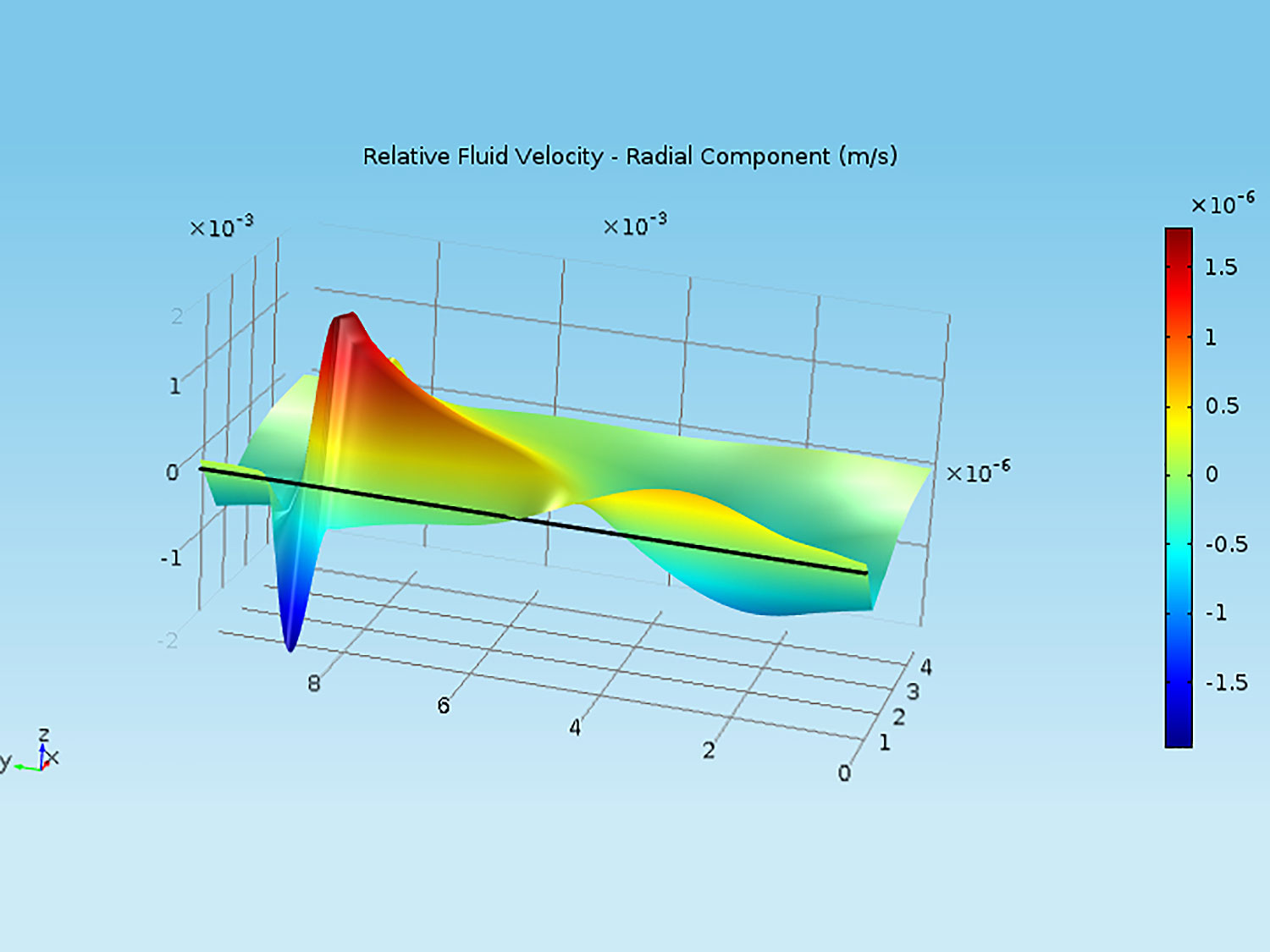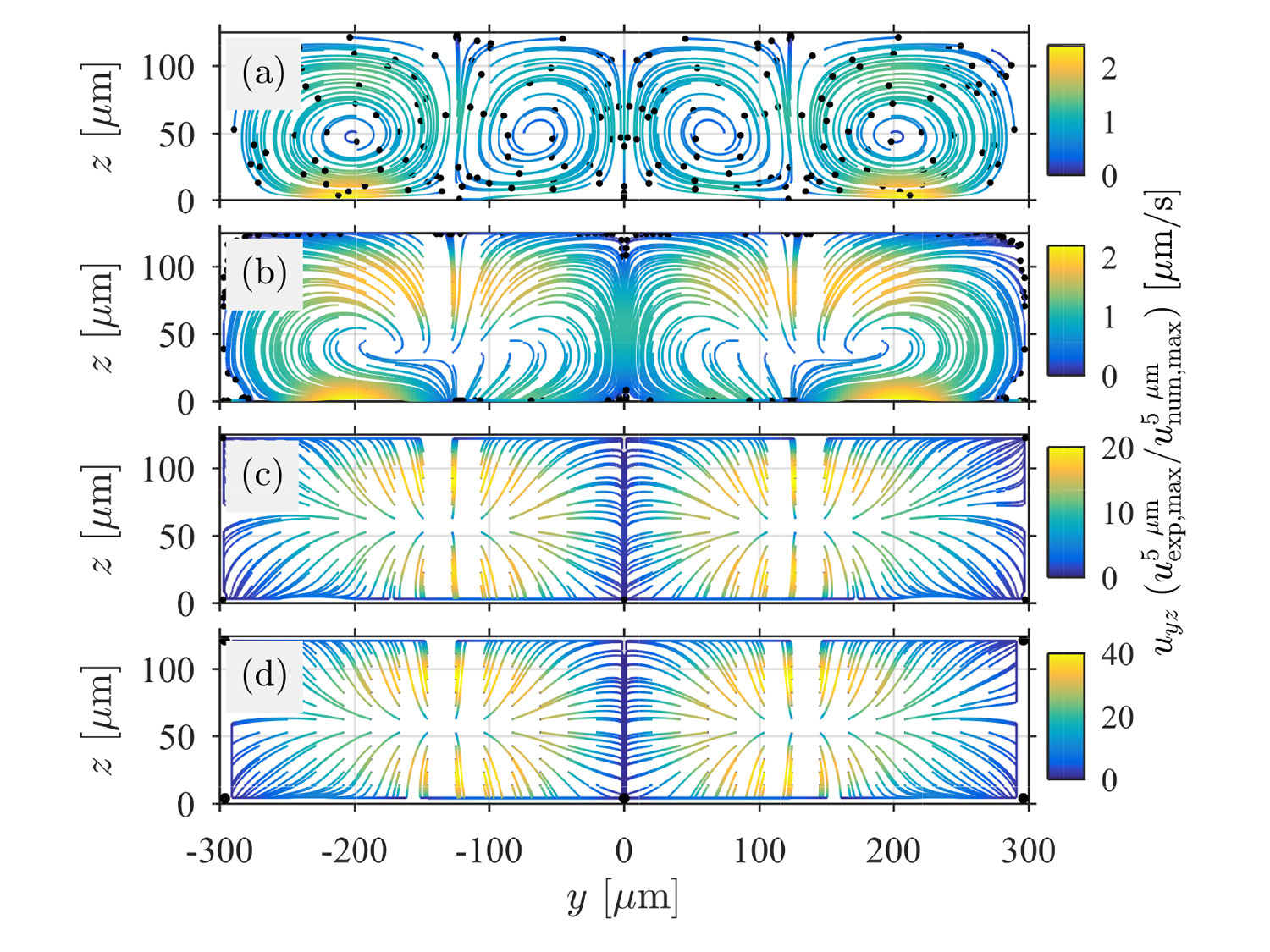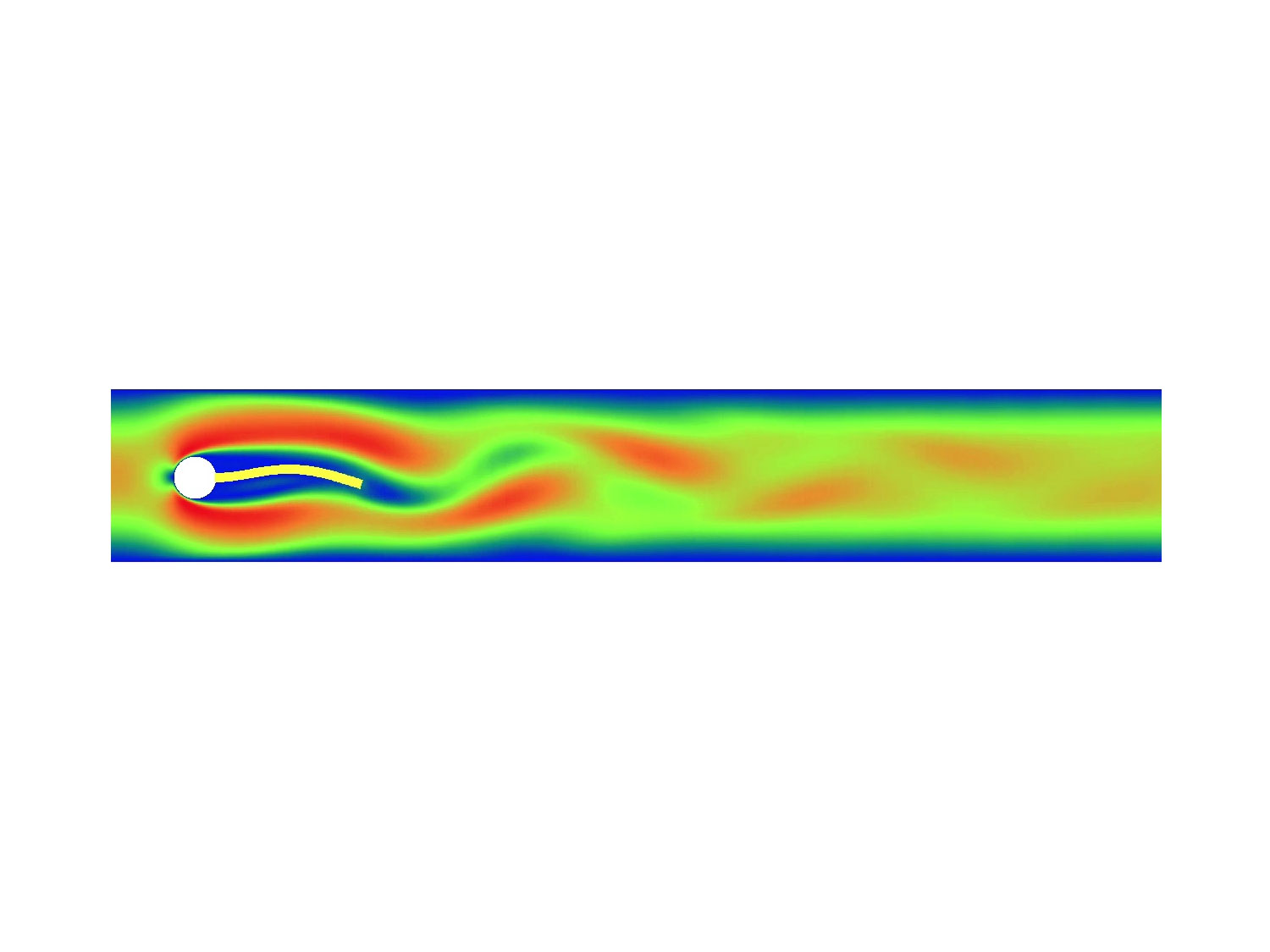
Fig 1
Numerical prediction of the radial component of the velocity of interstitial fluid relative to that of the tissue in response to the peristaltic motion of the wall of a typical penetrating artery in brain. This calculation is part of a study addressing an important open question in brain physiology: how are toxic metabolites cleared from brain tissue? When these metabolites accumulate in brain tissue various pathologies arise, including Alzheimer's disease.

Fig. 2
Numerically predicted particle trajectories in a microacoustofluidic device in response to a high-frequency excitation of the substrate using surface acoustic waves. This calculation is part of a study to provide accurate engineering tools to design the next generation of diagnostic devices in biomedical applications. The devices are part of a growing technological trend called "lab-on-a-chip" (). This technology promises the ability to carry out in the palm of a hand a host of biochemical tests that nowadays require a well-equipped laboratory.

Fig. 3
Numerical prediction of the motion of a flexible tail flapping as fluids moves around it. This calculation is, which is part of a well-known benchmarking computational suite, was made to show that a new approach to solve fluid-structure interaction problems was indeed accurate and effective. Fluid-structure interaction is the study of the deformation of structures when they interact with a fluid in contact with them. The human body is a "gold-mine" of such problems. Here are just a few examples: blood flowing though flexible vasculature, food moving through the stomach and the intestine, brain pulsating while surrounded by cerebrospinal fluid.


